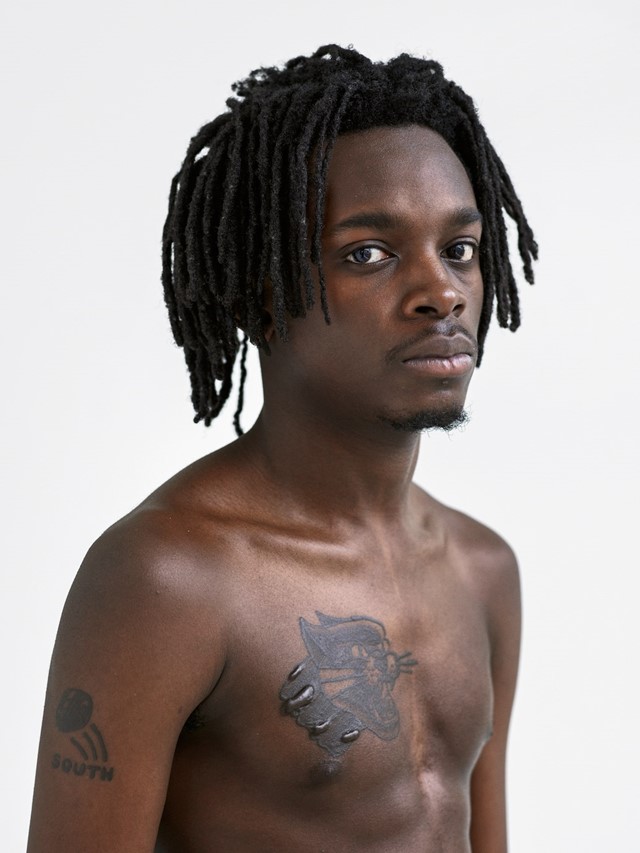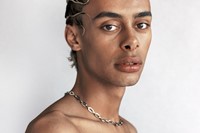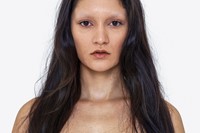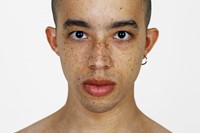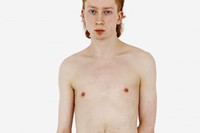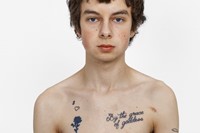Created in collaboration with Midland casting agency, the South African photographer’s stark new portrait series has “a lot to say about ideas of beauty, commodification, difference, and uniqueness”
In late 2017, photographer Pieter Hugo was working on a fashion story in New York with Midland, a casting agency that scouted models for the editorial. Looking at their photos, which hung in a grid on the studio wall, Hugo was struck by the mesmerising mix of street-cast models. Stripped of hair, make-up, and wardrobe, what remained was a compelling collection of unusual faces that embody the fascinating paradox of youth, combining both confidence and fragility.
Championing models who defy typical notions of beauty, Midland directors Rachel Chandler and Walter Pearce have long advocated for an aesthetic shift in fashion that would bring these idiosyncratic faces to the forefront of fashion. In fact, Chandler told Hugo, “Walter’s dad said the kids we cast are the type who’d have got the shit beat out of them at his school in Midland, Texas. So it was the perfect name.”
Hugo partnered with Midland to create Solus Vol. 1, a personal series of portraits photographed in London, Paris, New York, Cape Town and Johannesburg between 2019 and 2021. The photographer – who is best known for his photo books The Hyena and Other Men, Nollywood and Kin – issued a brief to the models instructing them to “come in your own clothes with as little branding as possible, monochrome and block colours preferable”. Once they arrived in his studio, he asked them to “simply present yourself and look me in the eyes.” In doing so, they could let down their guards, revealing their true selves and offering moments of unguarded innocence and unassailable poise.
The models intuitively understood the assignment, with many going so far as to be completely nude. For Hugo, a Gen-Xer who came of age during a profoundly nihilistic era, their agency and idealism were a sign of how times have changed. At the same time, other things reminded him that some things have stayed the same: adolescence as a time of self-discovery and yearning to fit in; a period marked by a profound need for knowing who you are and where you belong.
With Solus Vol. 1, selections from which are now on view at Stevenson Gallery in Amsterdam and collected in the new book from RM Editions, Hugo offers a captivating look at what it means to redefine beauty, attraction, sex, and identity in our brave new world.
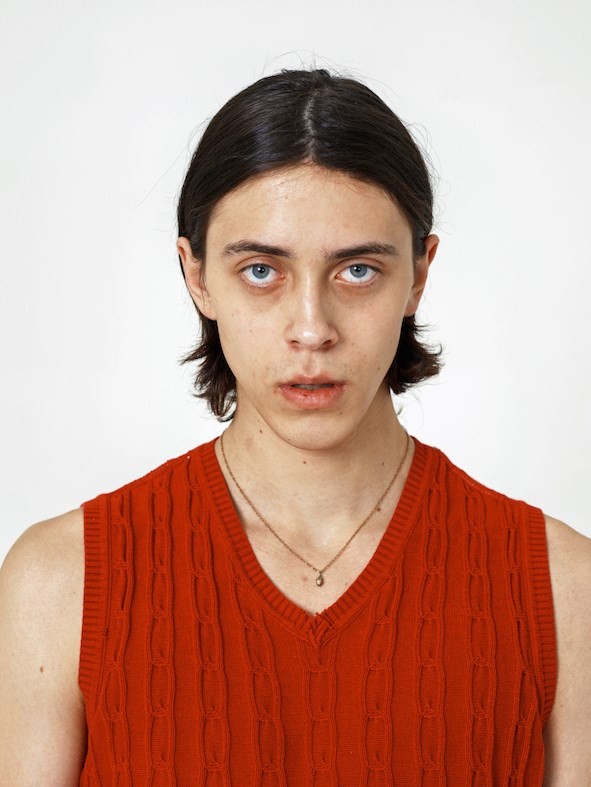
“A few years ago, I started getting approached by luxury brands to collaborate with them or shoot advertising campaigns for them. It wasn’t something I purposely sought out but when I started doing it initially, I really enjoyed it. It was a nice change of pace compared to my personal work, which are intense, solitary pursuits. I’m often away for long periods of time and don’t have a group of people I’m working with reflecting on the work as I’m creating it. There’s no clear objective; it’s a much more ethereal process, for lack of a better word.
“When I started doing fashion and commercial work, I enjoyed the collaborative aspect of it, where a group of people are working towards a common goal and there’s a dialogue about the work while you’re making it. It’s resolved much quicker: you shoot something and it’s out in the publication or on a billboard, whereas the personal work sometimes takes years to make, and once you finish, it’s still a couple of years before it gets shown in a gallery or a museum. So there was something of a quick fix – you’ll notice I’m using the past tense – doing this work. As an artist, I’ve always interrogated my medium; I think about it as much as I work in it, its implications and possibilities. At some stage after having spent a bit of time in the fashion world, I started getting ready to look at it with a more critical eye and make work that existed within that realm but really spoke about that.
“I was looking at the grid of casting photos taken by Rachel Chandler at Midland on the wall, and there was something about the typology of these faces that was very clear and an aesthetic was coming through. All models are atypical, otherwise they wouldn’t be models. They have some kind of ideal, a difference, or uniqueness that functions on many levels. In that grid, I saw the possibility of something more than what was happening in the fashion story that we were doing. I realised that if you moved those images into a different context, they would have a lot to say about ideas of beauty, commodification, difference, and uniqueness.
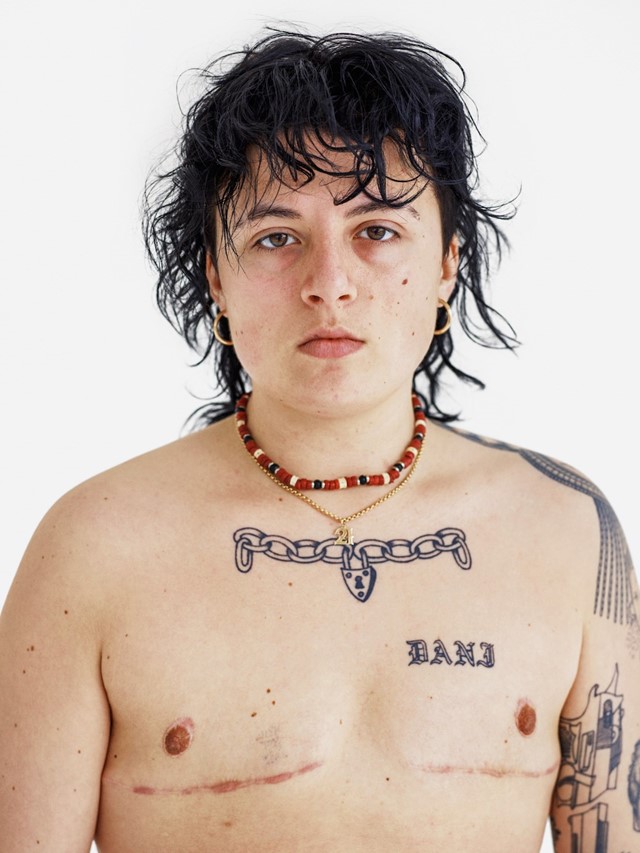
“I photographed so many people for the series, often at a crazy pace. It was hard to have a stream of sustained engagement with all the people that I photographed but I think that these types of models intrinsically understood that what I wanted them to do is to be themselves and present themselves without artifice. Some of the people I photographed are quite established models and were immediately striking poses. The hardest thing was to get people to turn their body and look straight at the same, but not smile or scowl – just be as neutral as possible and somehow in the process of doing that, also try and get some vulnerability.
“There’s a weird paradox of youth, where on one hand you’re incredibly self-conscious and impressionable but at the same time you are convinced you know everything and you probably do. You often have a wisdom that’s really on the edge of your life: you have conviction before it is mediated by experience and nuance. These kids are part of a global community and have a self-confidence, worldliness, and connectivity, which I didn’t have. I think that’s partially living in an era with the consequences of social media. You have a personality with your friends, a personality with your colleagues, and a personality that you project through whatever platforms you engage with the world, whether it be TikTok, Instagram, or whatever, shaping an identity. The experience of adolescence and youth is so different to mine from 25 years ago – but then again, it isn’t.”
Pieter Hugo: Solus Vol. 1 is on view through 22 October 2022 at Stevenson Gallery in Amsterdam.
